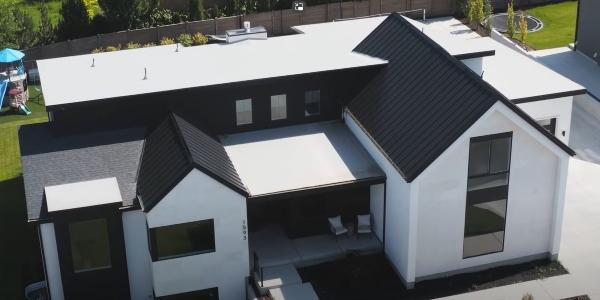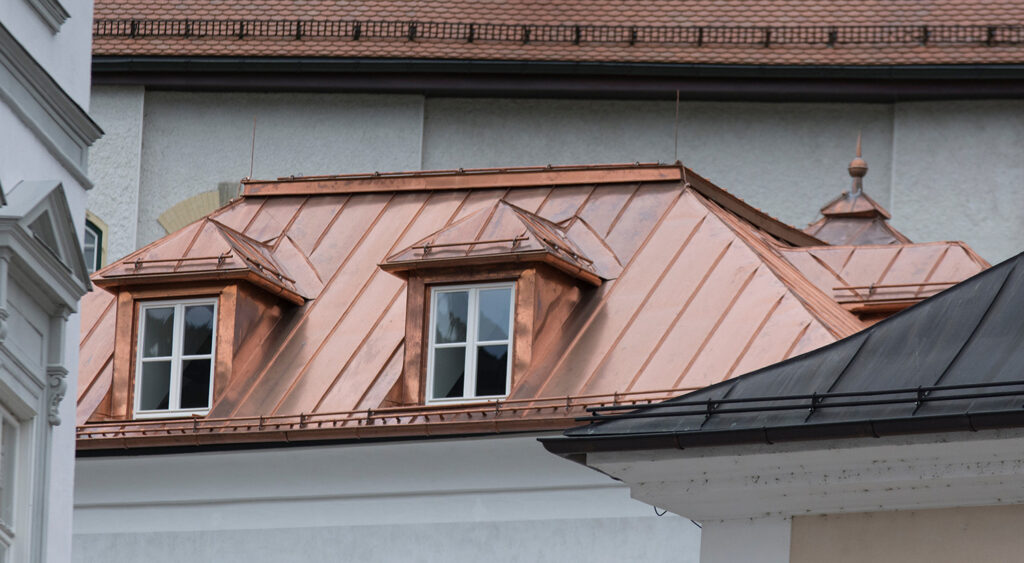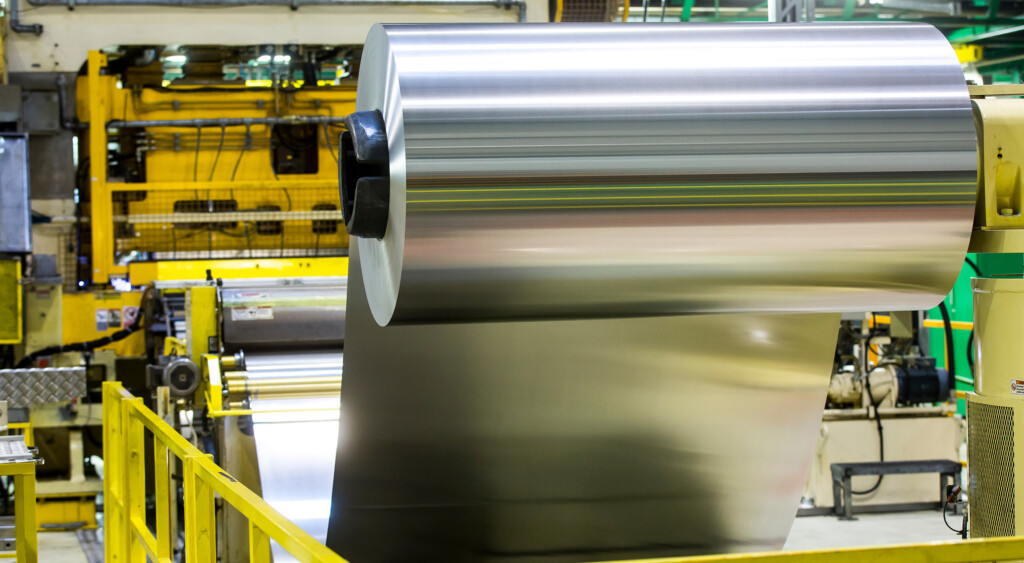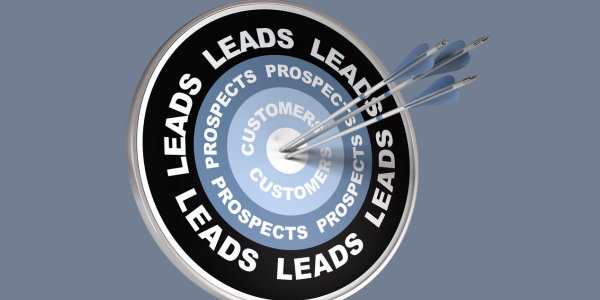UP TO THE MINUTE
Learn the ins and outs of the 5 most popular metal roofing materials – Part 2

By Julianne Calapa, Sheffield Metals.
Discover the strengths and features of copper and stainless steel for a durable and stylish roof.
When it comes to roofing materials, durability and aesthetics often top the list of priorities and few options meet those needs as elegantly as copper and stainless steel. In the first part of this series, our team at Sheffield Metals explored the advantages and challenges of Galvalume, aluminum and zinc. Now, we turn our focus to copper and stainless steel — two premium metals that not only withstand the test of time but also add a striking visual appeal to any structure. Whether you're looking to make a bold architectural statement or seeking a roof that will endure for generations, understanding the unique properties of these metals could be the key to your next project.

4 - Copper metal roofing
Copper is a reddish-orange metal that is malleable, ductile and has very high thermal and electrical conductivity. The use of copper roofing has been around for hundreds — if not thousands — of years. Historical data shows that the Romans used copper covering on the roof of the Pantheon in 27 B.C.
Today, copper is used as an eye-catching roofing material on architectural projects, commercial buildings and even residential homes. Plus, many property owners utilize copper as an accent portion of their roof or have copper cupolas, chimney caps, awnings and more.
Pros of copper roofing
- Lightweight – Compared to different metal substances and other roofing materials such as shingles, concrete or tiles, copper is extremely lightweight. Not only does this make it easier for installers and contractors to work with, but it also puts less stress on the structure of a home over time.
- Durability – Copper is a durable element and can withstand numerous decades as a roof. If properly installed, copper roofing can last 100+ years in some instances. Copper also works well in locations with heavy snow, frequent rainfall and strong winds.
- Aesthetically pleasing – Copper is often referred to as a premium roofing material, as it enriches the outside of a building and adds a metallic reddish-orange/brown focal point to a structure. As the copper ages, it develops a blue-green covering called patina, which happens because of oxidation and sun exposure. Many building owners specifically buy copper because of how it ages and adds to the curb appeal of a structure over time.
- Highly recyclable – Though not as recyclable as zinc, copper can be recycled and reused if still in good condition. Copper is also a naturally sourced metal and can be used in its original mined metallic form.
- Solderable – Copper can be soldered, unlike other roofing materials. This means roof/wall flashings and gutter joints can be weather-tight with a soldered connection.
- Limited warranty options – Coated copper material can come with limited substrate warranty options. However, most bare copper products do not have a substrate warranty. Again, verifying the available warranty options with your manufacturer is always best.
Cons of copper roofing
- Very expensive – Copper is one of the most costly metal roof materials, as copper is not as abundant on the Earth. Plus, the price of copper fluctuates almost week by week. You can expect copper roofing to cost about $600 to $1,100 per roofing square (100 square feet).
- Expansion and contraction concerns – In climates with striking temperature differences, copper roofing expands and contracts during heating and cooling cycles (more than steel but less than aluminum metal systems). Your contractor should ensure that your system can accommodate this thermal movement.
- Unpredictable patina – Some people are drawn to the look of the patina that will happen on a copper roof, but some might not want this greenish-blue covering on their home or structure. There is currently no exact science to predict the color or time frame that patina will occur with copper. In some climates, the patina will turn a rich green; in other environments, it will maintain a dark bronze look for decades.
- Run-off staining – Copper roof rain run-off is known to stain siding, brick, concrete, other metals, wood, etc. Home or business owners need to be aware of this factor and ensure the contractors install the roof so the water can safely run off it without coming into contact with other stainable materials.
- Dissimilar metals issues – Copper roofing and copper products in general, do not interact well with most other metal products used in roofing. It is important to know what products are used in the entire roof assembly to prevent dissimilar metal corrosion. This includes water run-off from the copper onto dissimilar metals as well.
- Limited engineering options – There are limited uplift-tested options available for most types of copper standing seam metal roof systems. If you find one, it will most likely be a mechanical seam profile (and not a snap-lock).
Learn more about copper metal roofing
 5 - Stainless steel metal roofing
5 - Stainless steel metal roofing
Stainless steel is an iron alloy made up of at least 10.5% chromium and contains other elements (such as carbon) and metals/materials to obtain desired properties.
When people think of stainless steel, they often think of large architectural structures such as elevators, bridges, building columns, handrails, etc. Or perhaps their kitchen appliances, cutlery, cookware or beyond.
However, stainless steel is also an option in the metal roofing industry — primarily because this material is known for its strength — which makes it a high-end specialty metal that could be the right material choice for some projects.
Pros of stainless-steel roofing
- Durability – As mentioned before, stainless steel is used in some of the world’s most powerful and sturdy metal products. Because stainless steel can withstand corrosion and degradation for 60+ years, it makes an excellent choice for metal roofing.
- Weathers elements – Stainless steel is specifically designed to withstand extreme weather and temperature climates. In addition to efficiently reflecting thermal temperatures away from a building, stainless steel doesn’t become brittle or crack during cold temperatures and keeps the warm air from escaping a structure.
- Variety of finish options – Stainless steel comes in a variety of different finishes, which makes it easier to match a multitude of other building materials. It can range anywhere from a dull, subtle gray similar to zinc roofing, to a highly reflective, polished finish resembling a mirror.
- Other uses (indoors) – Due to stainless steel’s flawless look and timelessness, some designers specify this material as a standing seam accent piece (or wall) to install on the inside of larger commercial or architectural buildings.
Cons of stainless-steel roofing
- No substrate warranty – One of the significant drawbacks to stainless steel is that it doesn’t carry a substrate warranty. Remember that a stainless-steel roof may perform well if handled and installed correctly, but it doesn’t come with that additional guarantee in the form of a substrate warranty.
- Expensive – The cost of stainless steel is in line with the price of zinc and copper, making it a high-end metal roofing choice. Stainless steel roofing can cost anywhere from $500 to $1,300 per roofing square (100 square feet), depending on the finish, panel type and thickness.
- Expansion and contraction concerns – In climates with striking temperature differences, stainless steel roofing systems expand and contract during heating and cooling cycles (more than galvanized steel but less than aluminum). Your contractor should ensure that your system can accommodate this thermal movement.
- Not recommended where there is standing water – Roofing made with stainless steel, especially if it’s in contact with other non-stainless-steel metals, requires adequate draining methods to remain durable and functional. Too much standing water on stainless steel can act as an electrolyte and cause galvanic corrosion.
Learn more about stainless steel metal roofing
Final thoughts on metal roofing material types
Galvalume, aluminum, zinc, copper and stainless steel are all great solutions for metal roofing needs. Knowing the common and unique aspects of a structure, residential or commercial, is the best place to start when choosing the best metal roofing material. Then, determine what factors are important to you, including:
- Cost
- Material strength (consider the structure’s climate, UV/weathering exposure, snow, rainfall, etc.)
- Weight your structure can withstand
- Sustainability
- Energy-efficient/recyclable
- Maintenance
- Other materials your roof or water run-off will come in contact with
- Availability of materials
At Sheffield Metals, we are dedicated to providing and educating our customers with the information they need to make the best and most informed buying decision. Contractors, architects, distributors, homeowners — we can help you with your metal roofing project.
Original article and photo source: Sheffield Metals
Learn more about Sheffield Metals International in their Coffee Shop DIrecotry or visit www.sheffieldmetals.com.




















Comments
Leave a Reply
Have an account? Login to leave a comment!
Sign In